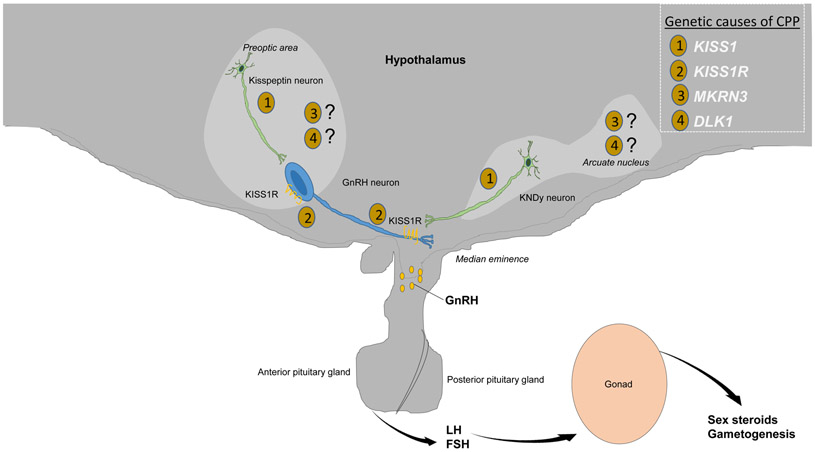Figure 1.
Activation of the hypothalamic-pituitary-gonadal axis during pubertal onset. The hallmark of pubertal onset is pulsatile hypothalamic gonadotropin-releasing hormone (GnRH) release, likely due to increases in activators such as kisspeptin, the most potent known stimulator of GnRH secretion, produced by kisspeptin neurons in the preoptic area and in the arcuate nucleus (where they co-secrete neurokinin B and dynorphin and are hence known as KNDy neurons). Kisspeptin signals directly via kisspeptin receptors (KISS1R) on GnRH neurons to control pulsatile GnRH release, which in turn leads to release of luteinizing hormone (LH) and follicle-stimulating hormone (FSH) from the pituitary, with subsequent downstream activation of sex steroid production—testosterone from the testes and estrogen and progesterone from the ovaries—and gametogenesis. Genetic variants in CPP include mutations in (1) KISS1 and (2) KISS1R, affecting kisspeptin and its receptor, respectively, as well as in (3) MKRN3 and (4) DLK1, for which the mechanisms of action in the hypothalamus are still being fully elucidated.

